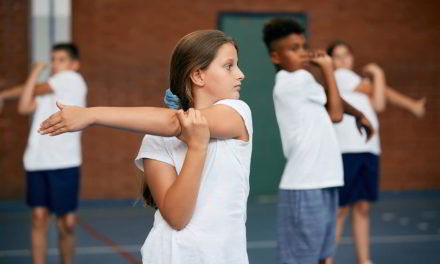Government figures show that the vast majority of young people don’t get the recommended minimum amount of 60 minutes exercise per day.
This is worse for girls than for boys: just 15% of girls achieve that goal, compared to 27% of boys. Participation falls off with age in both sexes, but again this is much faster in girls.
This has huge physical and mental health implications. Government figures show that 31.5% of girls in year 6 are overweight or obese. High blood pressure, arterial thickening, raised cholesterol and even type 2 diabetes – all previously thought to be adult conditions – are being seen in obese children.
But it’s the psychological effects that are seen as most serious by the children themselves. These include low self-esteem, depression, poor body image and anxiety.
Mental health and wellbeing
A study by the Department of Psychiatry at Ahvaz Jundishapur University of Medical Sciences in Iran found a strong relationship between BMI and the severity of depression among female high school students in Ahvaz.
Here in the UK, the National Institute for Health and Care Excellence (NICE) found that almost 80,000 children are suffering from severe depression, while girls as young as six are dieting.
Around 90% of young people diagnosed with anorexia are female. The problem is getting worse, with girls as young as six being diagnosed and figures showing that the number of 14-year-old girls admitted to hospital because of an eating disorder jumped from 74 in 2003-04 to 336 a decade later. A similarly steep rise – from 87 to 336 – was seen in 15-year-olds.
Exercise brings all kinds of health benefits, from better general fitness to fighting depression and anxiety and improving self-esteem and body image. And this begs an important question: if being active is so good for us, why do so few girls exercise?
Girls not welcome
One possible reason is that girls might feel ‘squeezed out’ by the boys. Recreation grounds and playing fields are seen as ‘boys’ spaces’, with no equivalent for girls, according to one study of 10-14 year-olds, tellingly titled They Don’t Like Girls Hanging Around There.
A consequence of this is that, while boys might regularly have a ‘kick-about’, girls don’t report taking part in such unstructured physical activity.
Why don’t girls exercise?
How sport is perceived is different for boys and girls, too. In one study, all male participants reported being good at sport – particularly football – as a desirable status symbol. Girls, however, were more likely to concentrate on physical appearance or social activities like shopping.
Another aspect is embarrassment or lack of confidence. Low self-esteem and poor body image tend to make girls avoid exercise, which leads to even lower self-esteem and poorer body image – a dangerous downwards spiral.
In forthcoming articles in this series on Breaking Down the Barriers to Girls’ Participation in Sport, we’ll look in more depth at why girls aren’t taking part in exercise, at what can be done and how to address things like poor body image in PE lessons. We’ll consider different types of physical activity and hear from some successful female athletes.
Rebecca has been a writer and editor for almost 20 years. She writes on a huge range of subjects, concentrating on sport, nature, mental health, and crafts.










